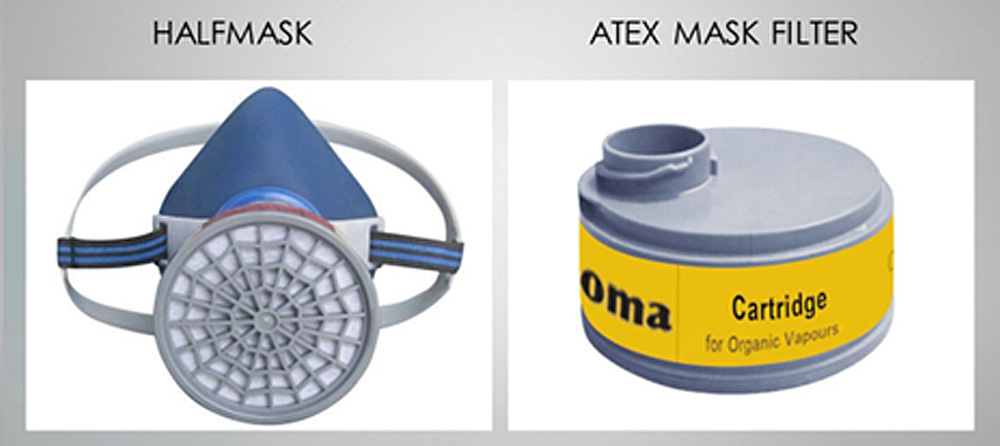Escape Masks

Filter classification
The filter is selected according to the toxic compound.[2] Each filter type protects against a particular hazard:
- AX - Low-boiling (≤65 °C) organic compounds
- A - High-boiling (>65 °C) organic compounds
- B - Inorganic gases (hydrogen sulfide, chlorine, hydrogen cyanide)
- E - Sulfur dioxide and hydrogen chloride (acidic gases)
- K - Ammonia and amines
- CO - Carbon monoxide
- Hg - Mercury
- Reactor - Iodine and methyl iodide (radioactive)
- P - Particles; classified as P1, P2, and P3 according to removal efficiency
- ABEK, ABEK-P3, ABEK-HgP3 or other combination filters against multiple hazards
Particle filters are often included, because in many cases, the hazardous materials are in the form of mist, which is captured already by the particle filter before entering the chemical adsorber. Filtration may be aided with an air pump to improve wearer comfort. Filtration of air is only possible if there is sufficient oxygen in the first place. Thus, when handling asphyxiants, or when ventilation is poor or the hazards are unknown, filtration is not possible and air must be supplied from a pressurized bottle as in scuba diving. Also, a gas mask does not protect against other hazards; for example, corrosive gases can damage the skin, requiring full-body protection.
